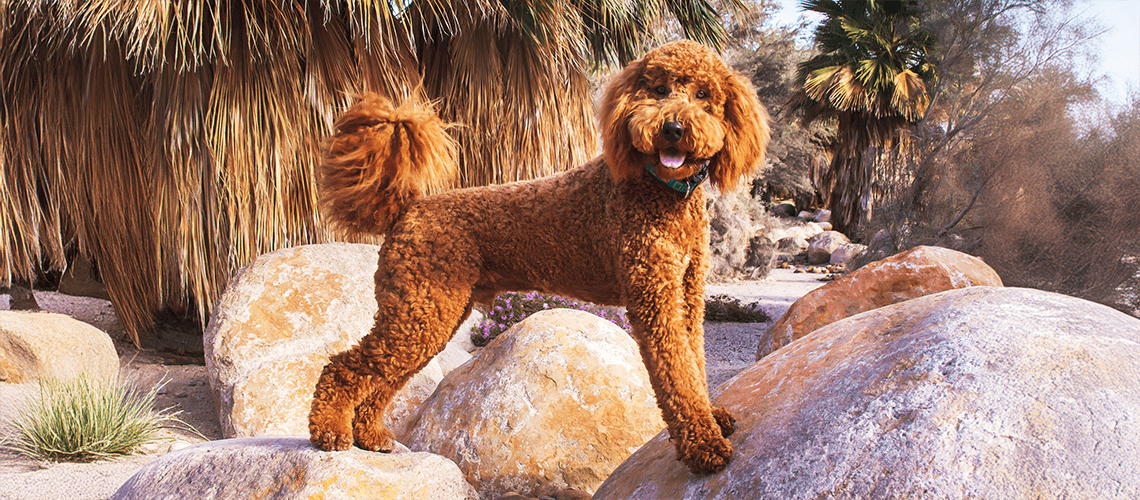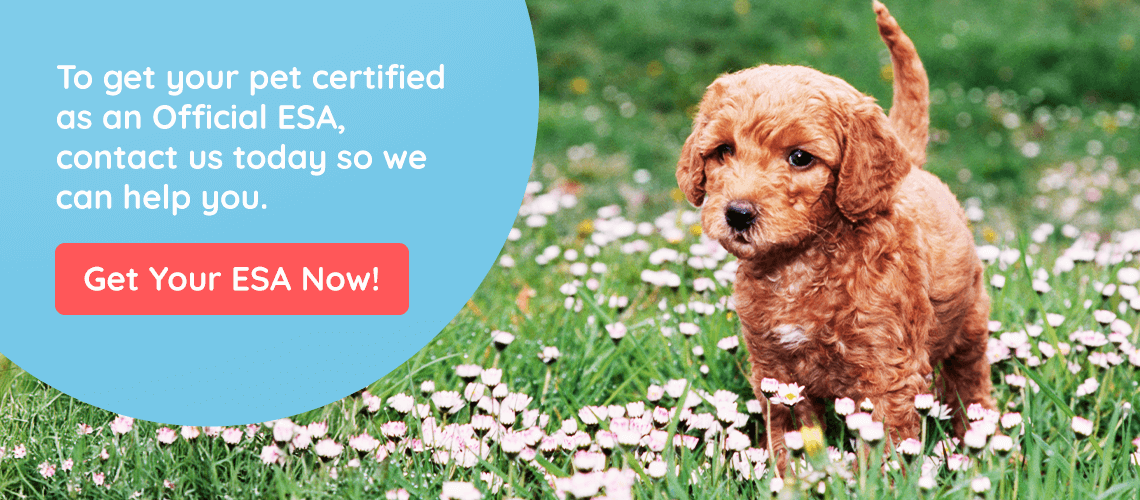Labradoodles are a popular dog breed known for their friendly nature and fluffy coats. Many people think Labradoodles are hypoallergenic, which means they believe these dogs won’t cause allergies. But is this true? Let’s find out!
What Does It Mean for a Dog to Be Hypoallergenic?
When we say a dog is hypoallergenic, we mean it is less likely to cause allergic reactions. People with pet allergies react to proteins found in a dog’s skin cells, urine, and saliva. Some dogs produce fewer allergens, which makes them a better choice for allergy sufferers.
Are you considering an emotional support animal to help with allergies and emotional well-being? Take our Emotional Support Animal approval quiz to find out if you qualify!
Why Are Labradoodles Considered Hypoallergenic?
Labradoodles are a mix between a Labrador Retriever and a Poodle. Poodles have coats that produce fewer allergens, which makes them popular among people with allergies. When you cross a Poodle with a Labrador Retriever, you might get a Labradoodle that has a similar hypoallergenic coat to the Poodle’s.
What Are the Different Hair Coats of Labradoodles?
Labradoodles can have three types of coats:
Wool Coat:
- Similar to a Poodle’s coat
- Tightly curled and dense
- Produces fewer allergens
- Considered the most hypoallergenic type
- Requires regular grooming to prevent matting
Fleece Coat:
- Soft and wavy, sometimes curly
- Silky texture
- Produces fewer allergens than a hair coat
- Easier to groom than a wool coat
- Considered hypoallergenic but slightly less so than a wool coat
Hair Coat:
- Similar to a Labrador Retriever’s coat
- Straight or slightly wavy
- Can shed more than wool or fleece coats
- More likely to cause allergies
- Requires regular grooming to control shedding
Finding the right coat type for your needs can make a big difference in managing allergies. If you’re also considering an ESA, take our Emotional Support Animal approval quiz to see if you qualify!

Can a Labradoodle Not Be Hypoallergenic?
Yes, not all Labradoodles are hypoallergenic. Since Labradoodles are a mixed breed, they can inherit more traits from either the Labrador or the Poodle. Some Labradoodles might produce more allergens, especially if they have a hair coat. It’s important to spend time with the dog before bringing it home to see if it triggers allergies.
Which Types of Labradoodles Are Most Hypoallergenic?
Labradoodles with wool or fleece coats are usually more hypoallergenic. These coats produce fewer allergens and don’t shed as much as hair coats. Regular grooming also helps reduce the number of allergens.
What Is the Science Behind Pet Allergies?
Pet allergies happen because of proteins found in a dog’s dander (which is dead skin cells), saliva, and urine. When people with allergies come into contact with these proteins, they might start sneezing, get itchy eyes, or even have trouble breathing. Even dogs that are called hypoallergenic still produce some allergens, but usually in smaller amounts. This means they can be a better choice for people with allergies, but no dog breed is 100% hypoallergenic. If you want a furry friend and are worried about allergies, it’s important to learn how to manage them.
What Are the Pros and Cons of Having a Labradoodle?
Labradoodles can make wonderful family pets because they are friendly, smart, and usually good with kids. They are playful and loving, which makes them great companions. However, if you or someone in your family has pet allergies, it’s important to know that even Labradoodles, which are often thought to be hypoallergenic, can still cause some allergic reactions. Their coats can produce fewer allergens, but they are not completely allergen-free. So, it’s important to think about both the good and the not-so-good things before deciding to bring a Labradoodle into your home.
Are you looking for a furry friend who can also provide emotional support? Discover if you qualify for an ESA by taking our Emotional Support Animal approval quiz.

How Can You Deal With Pet Allergies?
If you love dogs but suffer from allergies, there are ways to manage your symptoms:
- Choose dogs that are known to produce fewer allergens.
- Keep your home clean and vacuum regularly.
- Wash your hands after petting your dog.
- Use air purifiers to reduce allergens in the air.
- Designate certain areas of your home as pet-free zones.
How Can You Find a Breeder You Can Trust?
When looking for a Labradoodle, find a reputable breeder. A good breeder will provide information about the dog’s parents and help you choose a puppy with a coat type that is less likely to cause allergies. They can also offer advice on grooming and care to keep allergens at bay.
Conclusion
Labradoodles are often considered hypoallergenic, but not all of them are. Understanding the different coat types and spending time with the dog before making a decision can help ensure a happy and healthy relationship with your new furry friend. Remember, even hypoallergenic dogs require regular grooming and care to minimize allergens.
If you’re considering a Labradoodle, weigh the pros and cons, understand the science behind pet allergies, and find a trustworthy breeder. This way, you can enjoy the companionship of a loving, allergy-friendly family pet. And if you’re looking for more support from your furry friend, take our Emotional Support Animal approval quiz to see if you qualify!




